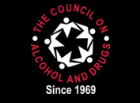Official Newsletter of Drug Free Workplaces (January)
"Getting sober was the single bravest thing I've ever done and will ever do in my life."
-Jamie Lee Curtis
www.LiveDrugFree.org
January 2024 Vol. 25 No. 1
Published by the Council on Alcohol and Drugs
Tel (404) 223-2486 | Fax (866) 786-9811 | www.LiveDrugFree.org
The following information is provided by the National Institute on Drug Abuse.
What is Kratom?
“Kratom” commonly refers to an herbal substance that can produce opioid and stimulant-like effects. U.S. and international agencies have expressed concern that kratom products may cause serious harm. There are currently no uses for kratom approved by the U.S. Food and Drug Administration.
While estimates of the scope of kratom use in the United States vary, the expansion of kratom vendors and increasing case reports suggest kratom use has become more common over the past two decades.
How and Why is Kratom Used?
People typically use kratom by swallowing raw plant matter in capsule or powder form, mixing kratom powder into food or drinks, brewing the leaves as a tea, or taking liquid kratom extract. People who use kratom report both stimulant-like effects and effects that are similar to opioids and sedatives.
Researchers have found that people report using kratom to alleviate pain, to address symptoms of mental health conditions like anxiety and depression, to help stop or reduce opioid or other substance use, and to manage withdrawal symptoms and cravings related to opioids and other drugs. Most report multiple reasons for using kratom.
Kratom does not show up on a standard 5-panel urine-based drug test but may be detected in urine for up to five days on a 10-panel test.
Side-effects of Kratom?
Rare but serious effects have been reported in people who use kratom, including psychiatric, cardiovascular, gastrointestinal, and respiratory problems.
Because kratom research is relatively new compared to more widely used drugs, there is little evidence to determine how kratom
use may affect someone over time. Case reports do show regular, long-term kratom use in large amounts may be associated with serious liver problems.
Researchers have not proven kratom to be safe or effective for any medical purpose. In case reports, clinicians report seeing patients with a wide range of very rare but serious adverse effects associated with kratom exposure, including mental and neurological symptoms (confusion, tremors, and seizures), heart and lung problems (high blood pressure and slow breathing), gastrointestinal problems (nausea and vomiting), and liver problems. Researchers continue to study potential adverse effects in humans, animal models and cells, including possible damage to the cardiovascular system.
Is Kratom Addictive?
Studies suggest people may experience mild to moderate withdrawal symptoms when they stop regular kratom use, but more research is needed to understand to what extent people develop substance use disorder symptoms related to kratom.
Preliminary data from anonymous surveys of people who use kratom suggest a minority of people report experiencing
kratom-related withdrawal symptoms and a smaller minority report experiencing substance use disorder symptoms related to kratom use.
Some experts are concerned about kratom’s addictive potential because the main kratom compounds, mitragynine and 7- hydroxymitragynine, partially activate the same receptors (specific molecular structures on the surface of nerve cells) in the brain on which drugs with known addictive properties act.
The following suicide prevention information, while provided by the Georgia Department of Behavioral Health and Developmental Disabilities, will also be helpful to those in states other than Georgia. All online resources listed are available to users nationwide.
As we enter a new year, many of us set new goals for self-improvement. Though the journey of becoming happier and healthier versions of ourselves is a worthy pursuit, for many of us, our New Year’s resolutions inevitably end in disappointment. Much of this can be attributed to setting unrealistic goals, or rather, unrealistic timelines in which to achieve said goals, which can lead to a one step forward, two steps back reaction that can have a severe effect on our mental health.
Suicide prevention experts look closely at various data points to identify the various risk factors and trends that increase suicide risk. Looking specifically at data from the state of Georgia these past few years, we can draw several conclusions about what types of stressors effect Georgians and when the most deaths occur because of those stressors. In 2021, Georgia ranked 28th in suicide deaths in the US. The age-adjusted rate of suicide deaths in Georgia is higher than the rate for the rest of the South and higher than the national rate for the country. In 2022, 1,626 lives were lost in Georgia due to suicide. These 1,626 deaths equate to 48,741 years of potential life lost. Fortunately, there were no recorded suicide deaths among children under eight years old during this time as suicide death rates are highest among people older than 22. However, suicide is the leading cause of death for youth ages 10-14.
When looking at times of year when suicides are most prevalent, the data can be a little inconsistent from year to year, but several trends can still be observed. January is consistently a concerning month when looking at trends in Georgia since 2018. Seasonal suicide trends among school-aged children also identify January as a concerning month among the Georgia youth demographic. Contrary to what many of us have heard, end-of-year holidays are not when suicide rates are the highest. Though Georgia did see a significant spike in suicide deaths in November of 2021, suicide deaths were generally lower in November and December in comparison to other months.
There is no one clear datapoint that shows why January consistently ranks highest in suicide deaths from year to year. Suicide is a very complex issue with many contributing factors, and only so much data is available surrounding the circumstances of each death. However, there is significant data that supports which risk factors increase suicide risk and—more importantly—which protective factors decrease risk.
When we write up our New Year’s resolutions, we are often trying to reduce the things that bring us stress, decrease our health, or make it more difficult to achieve our long-term goals, like drinking less, spending less, or watching what we eat. Additionally, we also strive to add activities that increase our mental and physical health, such as getting more exercise, spending more time with friends and family, and prioritizing overall self-care. In essence, these personal New Year’s goals overlap with several suicide risk and protective factors. This is great news—or it would be if we could all be successful in achieving these goals, but most of us fall short within that first month.
There are several steps we can take to start the new year strong, including setting more realistic expectations. Many of us set expectations based on a best-case scenario, not accounting for all the variables that inevitably throw us off course. Accounting for those variables is difficult, as we do not have a crystal ball. However, we can have a plan B, plan C, and even a plan D when things come up. We can also give ourselves more grace when we misstep or miss a milestone. Accountability is another great motivator that we can all benefit from. Finding people who want to achieve similar goals and agreeing to support one another and keep each other accountable is an excellent tool in our journey to self-improvement. One more important strategy is to break down big goals into smaller goals, identifying the steps along the way needed to reach that loftier pursuit. Setting these smaller, more attainable steps towards our larger goals can help us see progress and make necessary course corrections without feeling like we’ve failed.
There are many precipitating factors and risk factors that increase the risk of suicide and overall feelings of despair, some of which are completely out of our control. However, having the tools to become a more resilient individual and taking control of the things that are within our power to change can help reduce risk. Moreover, being in a “better place” can give us the bandwidth needed to support the people we interact with daily and helps us be in the best position to give them support.
To learn more about suicide prevention, visit the DBHDD website at: https://dbhdd.georgia.gov/suicide-prevention.
Or contact the Suicide Prevention Director, Rachael Holloman, at: rachael.holloman@dbhdd.ga.gov.
CONTACT US
Phone Number: (800) 929-1150
Email: info@worksmartstaffing.com
Home Office: 1318 Haywood Road, Suite A
Greenville, SC 29615
All Rights Reserved | WorkSmart







